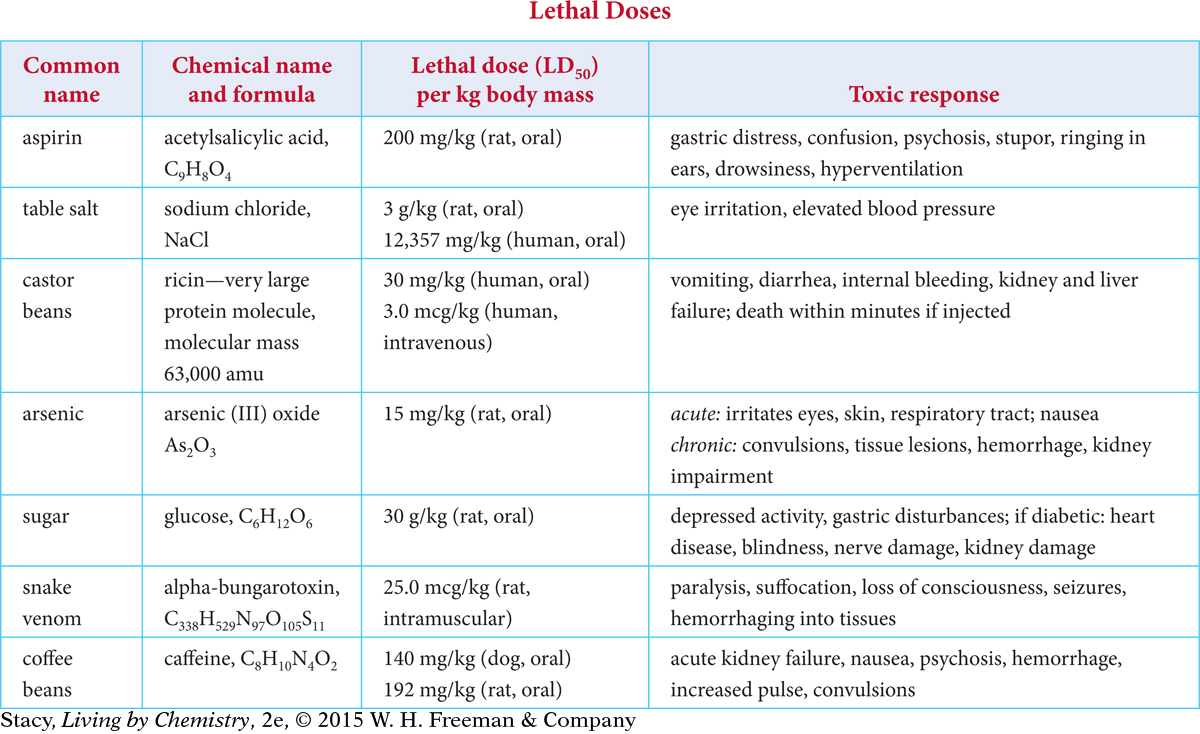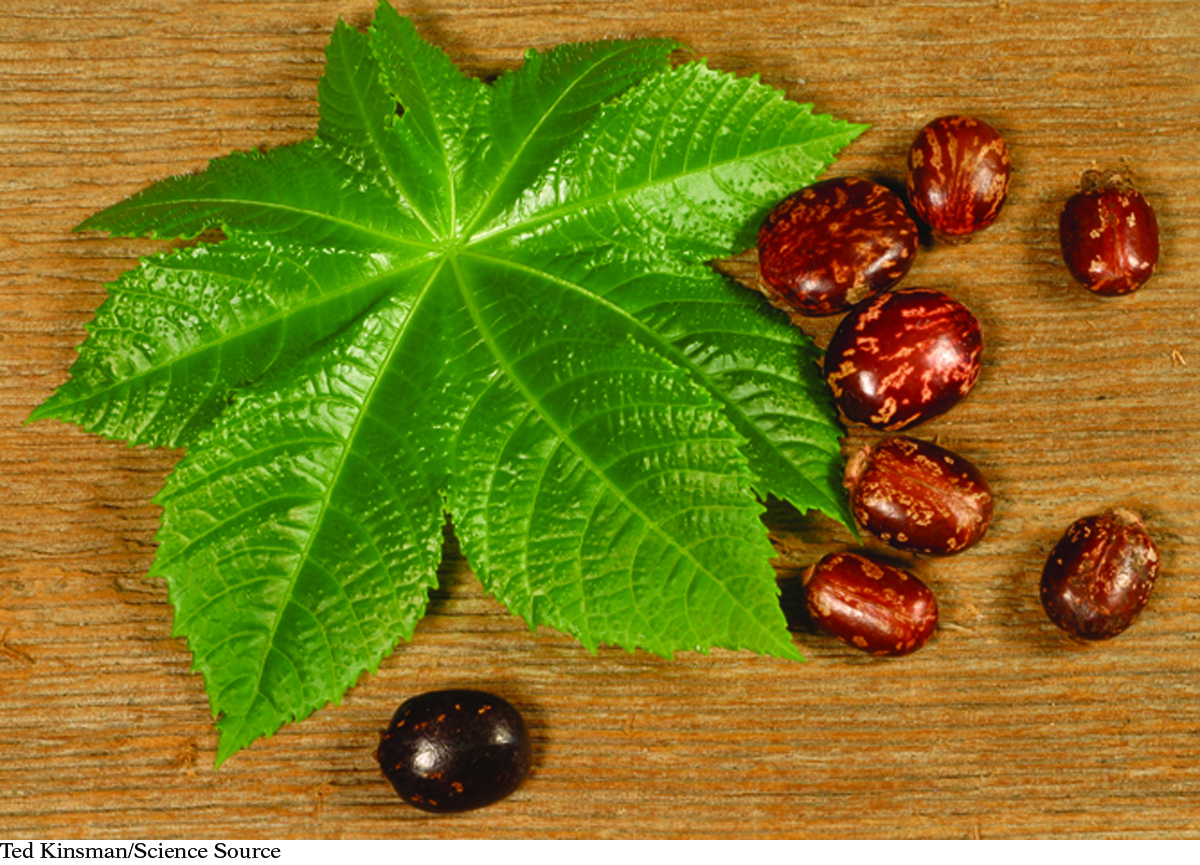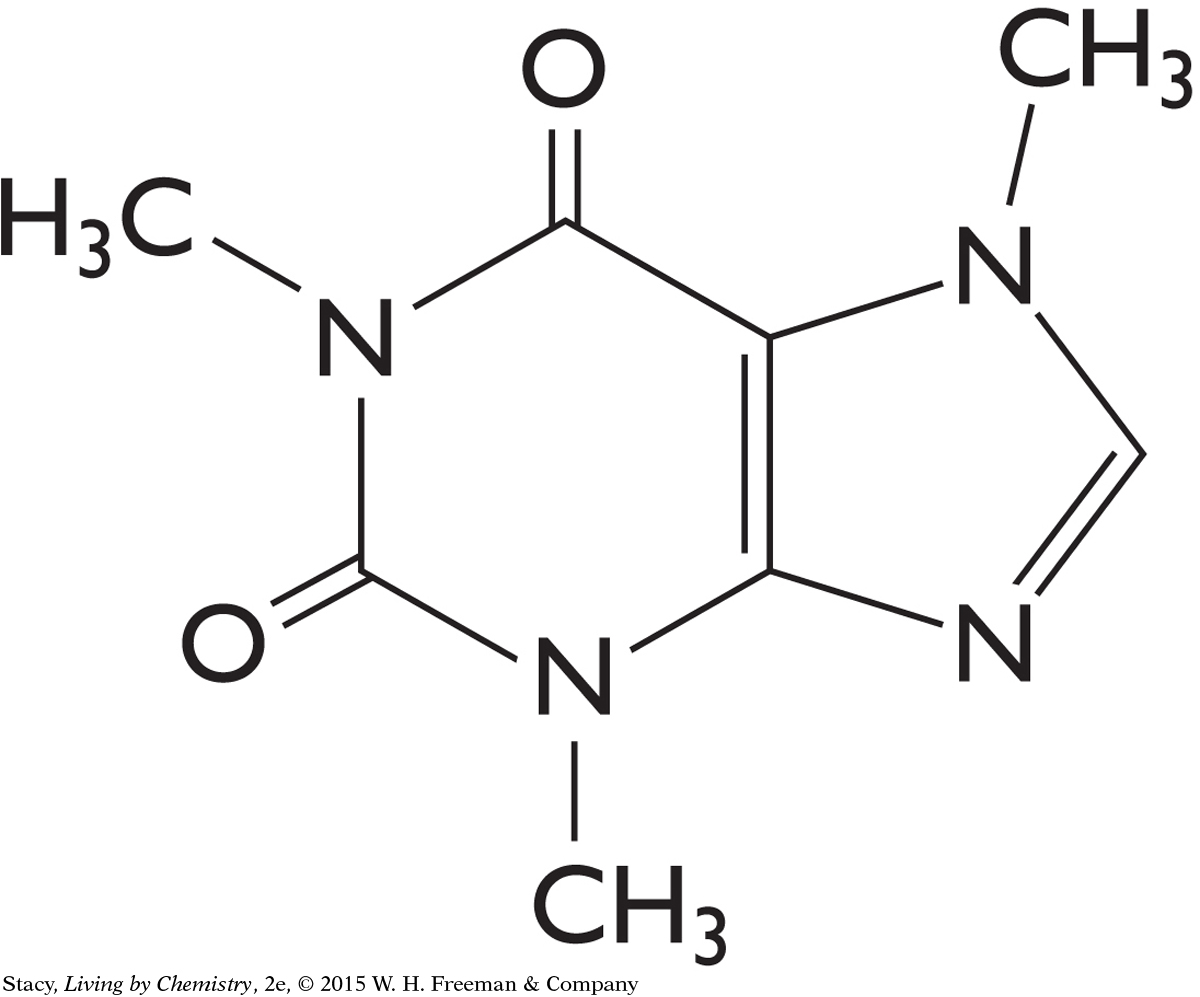LESSON 74: Lethal Dose: Toxicity
THINK ABOUT IT
Poisonous snakebites are medical emergencies. The venom from the bite is very toxic and can be deadly, especially for small children or small animals such as rabbits and mice. However, tiny amounts of snake venom have been used therapeutically as a medicine to control high blood pressure. How much snake venom is toxic and how much is therapeutic?
How much is too much of a substance?
To answer this question, you will explore
How Toxicity Is Measured
Relationship to Body Weight
How Toxicity Is Measured
EXPLORING THE TOPIC
How Toxicity Is Measured
You have probably been warned about the dangers of dozens of different substances, from pesticides to poisonous wild mushrooms. You know better than to drink your shampoo or rub gasoline on your skin. But how is toxicity determined in the first place? And how is it that some things that are good for you, like vitamin tablets, can be toxic or even lethal in high doses?
MEASURING TOXICITY
BIOLOGY CONNECTION
BIOLOGY
CONNECTION
One of the chemicals in the venom of certain species of snakes lowers the blood pressure of their prey to make them unconscious. In tiny doses the same chemical can be used to treat high blood pressure.

For our safety, scientists try to determine the toxicity of the products we buy and the substances we come in contact with. Sometimes, they find the toxicity accidentally, when a person is exposed to a harmful substance. Other times, it takes a great deal of evidence before it is determined that a substance is toxic. This was the case with lead-based paints.
It is clearly not a good idea to determine how toxic something is by purposefully exposing humans. Yet it is vital to know how much of a particular substance is dangerous. So, toxicities of most substances are measured by exposing laboratory animals to toxic substances. Typically, rats or mice (sometimes rabbits, dogs, or monkeys) are used. The harm that might be done to the animals must be carefully weighed against potential harm to humans if the toxicities of substances, such as medicines, are unknown.
One way to measure toxicity is to measure the lethal dose of a substance, the amount of substance that can cause death. The LD50 of a substance is the amount of a substance that causes the death of half, or 50%, of the animals exposed to it.
The table provides the LD50’s for several common substances in grams, milligrams, or micrograms (mcg) of substance per kilogram of body mass. A microgram is one millionth of a gram.

MEDICINE CONNECTION
MEDICINE
CONNECTION
Many toxins serve as medicines when used in moderation. Atropine, for example, extracted from the deadly nightshade plant, is used to treat cardiac arrest and poisoning by organophosphate insecticides and nerve gases. However, atropine is potentially addictive and an overdose can be fatal.


Notice the wide range of doses—from grams, to milligrams (thousandths of a gram), to micrograms (millionths of a gram). A small LD50 indicates that it does not take very much of the substance to produce ill effects. Substances with small LD50’s should definitely be avoided. Snake venom is one of the most dangerous toxins in the table, with an LD50 of 25.0 mcg/kg, while sugar, with an LD50 of 30 g/kg is one of the safer substances.
DOSAGE DETERMINES TOXICITY

You may be surprised to see lethal doses for substances like sugar and aspirin. These substances are usually considered beneficial. However, everything is toxic in a large enough dose, even life-sustaining substances like water and oxygen. And scientists have discovered that many highly toxic substances also have therapeutic value. Botulinum toxin (Botox) can help patients suffering from cerebral palsy. A very large protein isolated from the venom of the blue scorpion has been discovered to inhibit certain cancer tumors.
Relationship to Body Weight
Relationship to Body Weight
You may be wondering how testing a substance on very small animals, like rats, will determine whether it is toxic to a larger mammal, such as a human. To take size into account, the LD50 is reported in milligrams of substance per kilogram of body weight, mg/kg. That way the lethal dose can be estimated for a mammal of any size.
Testing lab animals gives us only an approximate range for safety. Our bodies differ in many ways from the bodies of rats or rabbits. And it may seem particularly unkind to subject animals to testing. However, the alternative would be to risk human life with untested medications. Imagine if the safety of products on store shelves had never been confirmed in any way.
Example
Caffeine
The lethal dose for caffeine is approximately 150–200 mg/kg of body mass. How much caffeine would be lethal for a 120 lb person? How many cups of coffee is this?

Structural formula for caffeine
|

Contains ~150 mg caffeine
|
Solution
Lethal dose is reported in mg/kg, so first convert pounds to kilograms. There are 2.2 pounds in a kilogram.
| Convert body weight from pounds to kilograms. |

|
| Multiply the person’s weight by the lethal dose. |

|
| Convert number of milligrams to number of cups. |

|
So, it would be difficult to ingest a lethal dose of caffeine simply by drinking coffee. (It would take about 54 cups for the 120 lb person!)
[For a review of this math topic, see MATH Spotlight: Dimensional Analysis on page A-16.]
LESSON SUMMARY
LESSON SUMMARY
KEY TERM
toxicity
How much is too much of a substance?
Every substance on the planet is a potential toxin. By the same token, many substances that are considered toxic have health benefits when taken in the correct dose. Thus, toxicity is determined by dose. Scientists use a variety of methods to measure toxicity. One measurement is called the LD50. This is the amount of a substance that kills 50% of animals exposed to it. It is commonly expressed in milligrams of substance per kilogram of body weight. A low LD50 means a more toxic substance.
Exercises
Reading Questions
How can scientists determine the toxicity of a substance?
How is toxicity related to body weight?
Reason and Apply
Find at least five products at home with labels that warn of toxicity. Give the name of each product, and answer these questions:
How does each label advise you to avoid harmful exposure to the product?
What does each label tell you to do if a dangerous exposure does occur?
Using all of this information, what can you hypothesize about the chemical properties of each product?
Look at the recommended treatment for dangerous exposure to each product. What chemical and physical processes do you think might be involved in the treatment?
Ethanol is grain alcohol. The LD50 for ethanol is 7060 mg/kg (rat, oral).
How many milligrams of ethanol would be lethal to a 132 lb adult?
How many glasses containing 13,000 mg of ethanol would be lethal to a 22 lb child?
The LD50 for vitamin A is 1510 mg/kg (rat, oral).
How many mg of vitamin A would be lethal to a 132 lb adult?
How many vitamin tablets containing 0.40 mg of vitamin A would be lethal to an adult?
Use the Internet or other resource to research vitamin A. What are the benefits of vitamin A?